What is flowering ground cover, As a gardener, I often get asked about the best options to add color and beauty to bare garden spots. Flowering ground covers are low-growing plants with aesthetic charm and functional benefits. These plants spread quickly, creating a natural carpet of blooms and foliage that fills spaces where grass struggles to grow.
They prevent soil erosion, retain moisture, and suppress weeds — all while adding a vibrant display of color. Flowering ground covers thrive in many climates and require minimal maintenance, making them ideal for busy gardeners.
Some varieties tolerate full sun, while others do well in shaded spots, allowing you to find the perfect match for your landscape. Whether adding color to garden borders or brightening walkways, flowering ground covers create a lush, inviting look. Let me guide you through these hardy and beautiful plants!
What Is Flowering Ground Cover?
Flowering ground cover is a type of low-growing plant that covers bare soil. It spreads quickly, creating a colorful carpet of blooms. These plants work well for filling in spaces where grass won’t grow.
I find them useful for preventing soil erosion and retaining moisture in the garden. They also help to suppress weeds, which saves me time and effort.
Many flowering ground covers thrive in different conditions. Some love full sun, while others prefer shade. With so many choices, I can easily match them to my garden’s needs.
Flowering ground cover adds vibrant color and charm, transforming empty spots into lush, blooming areas.
The Best 15 Flowering Ground Covers
When choosing the right flowering ground cover, I look for plants that are hardy, low-maintenance, and, of course, beautiful. Each selection has unique qualities, from their bloom colors to their sun and shade tolerance. Here are my top 15 flowering ground covers:
1. Creeping Thyme
Creeping thyme is a wonderful choice for gardeners looking for a low-maintenance, fragrant ground cover. This plant stays low to the ground and spreads quickly, creating a dense carpet that fills in empty garden spots.

Its delicate, purple or pink flowers bloom in the summer, adding a splash of color. Creeping thyme also releases a pleasant scent when brushed against, making it great for paths and walkways.
It prefers full sun and well-drained soil, thriving even in dry conditions. I love how it tolerates light foot traffic, which means I can plant it between stepping stones without worrying about damage.
This plant also attracts pollinators like bees and butterflies, making it ideal for supporting local wildlife. Once established, it requires little watering, which is a bonus for water conservation.
Creeping thyme is also resistant to pests, which keeps it looking healthy without extra care. Overall, it’s a tough and versatile plant that adds charm to any garden space.
2. Ajuga (Bugleweed)
Ajuga, also known as bugleweed, is a hardy ground cover that’s ideal for shady areas in the garden. Its rich blue and purple flower spikes bloom in spring, creating a stunning contrast against its dark green or bronze leaves.
Ajuga forms a thick mat that helps to suppress weeds, which saves me time on weeding. This ground cover spreads through runners, which root as they go, filling in bare spots quickly.
It does well in partial to full shade, making it perfect for underplanting around trees or in wooded areas. I appreciate that it’s both deer- and rabbit-resistant, which keeps it looking healthy in my garden.

Ajuga can handle different soil types, as long as the soil drains well. In the fall, its leaves often take on a rich burgundy color, adding seasonal interest.
This plant also tolerates a variety of moisture levels, from dry to moderately wet soil. With its beautiful colors and low maintenance, ajuga is a reliable choice for shaded ground cover.
3. Snow-in-Summer (Cerastium tomentosum)
Snow-in-Summer is a sun-loving ground cover that’s perfect for adding a cool, white accent to the garden. Its small, white flowers bloom in late spring to early summer, creating a stunning snow-like effect over its silvery foliage.
This plant is very tolerant of poor, dry soils, which makes it ideal for rock gardens or sandy areas. Snow-in-summer spreads quickly and forms a dense mat that can control soil erosion on slopes.
I find that it’s a great choice for filling in sunny borders or areas where other plants struggle. It’s also drought-tolerant, meaning it needs little water once established. The foliage remains attractive even after the flowers fade, adding texture to the garden year-round.
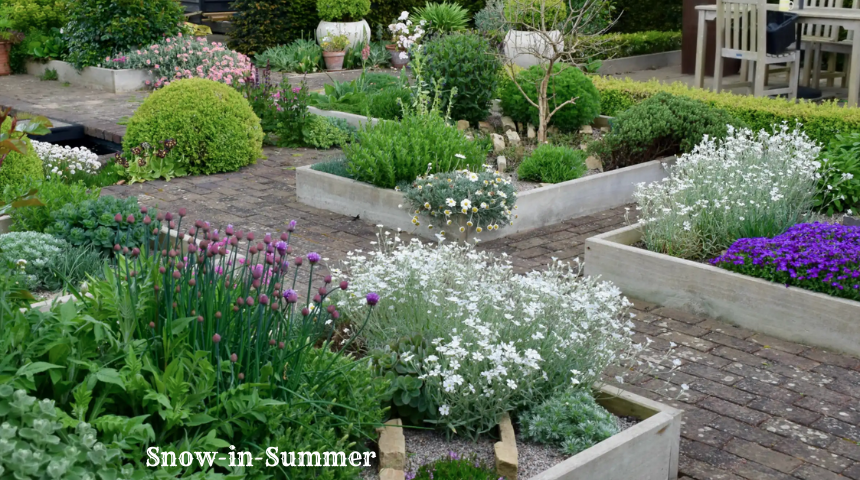
However, it can be aggressive, so I keep it trimmed to prevent it from overtaking nearby plants. Snow-in-Summer is deer-resistant and doesn’t attract many pests, which keeps it looking fresh and healthy.
This ground cover is both beautiful and tough, making it a valuable addition to sunny gardens.
4. Periwinkle (Vinca Minor)
Periwinkle, or vinca minor, is one of my go-to choices for shady ground cover with beautiful purple-blue flowers. It produces blooms in early spring, adding a pop of color to dark corners of the garden.
Its evergreen leaves stay green year-round, which means it provides interest even when it’s not flowering. Periwinkle spreads easily through trailing stems, covering bare ground quickly and preventing weeds from taking over.
It does well in partial to full shade and can tolerate a variety of soil types. I find it particularly useful for planting beneath trees where grass struggles to grow.
Periwinkle is also drought-tolerant, requiring minimal watering once it’s established. It’s generally pest-free and resistant to deer and rabbits, which makes it a low-maintenance option.
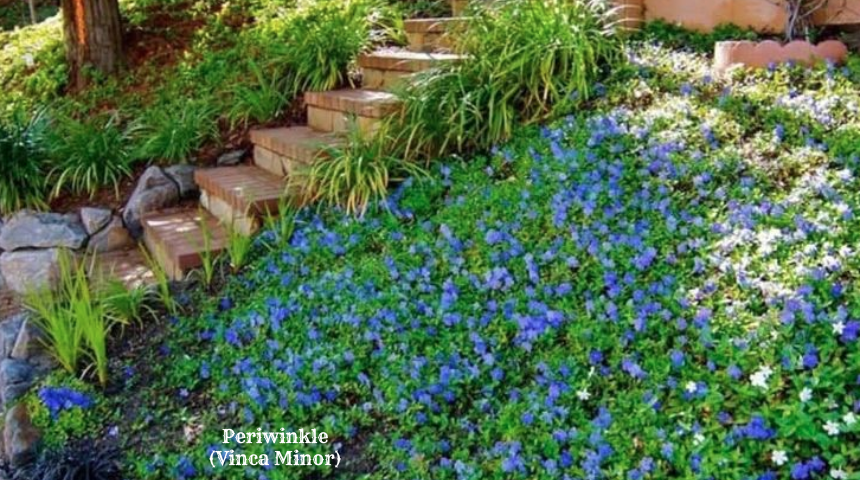
However, it can spread aggressively, so I keep it contained to prevent it from overtaking other plants. With its lovely blooms and easy care, periwinkle is a fantastic choice for shaded areas in the garden.
5. Moss Phlox
Moss phlox, also known as creeping phlox, is a vibrant ground cover that bursts into bloom in early spring. Its flowers come in shades of pink, purple, white, and blue, creating a colorful carpet that’s hard to miss.
This plant is perfect for sunny slopes, rock gardens, and borders where it can spread out and show off its beauty. Moss phlox grows low to the ground, forming a dense mat that prevents weeds and erosion.
I love how it thrives in full sun and tolerates poor, sandy soils, making it a versatile addition to many garden styles. It’s also drought-tolerant once established, needing little water during the summer months.
This ground cover is a favorite among pollinators like bees and butterflies, adding ecological value to the garden. Moss phlox remains attractive even when it’s not in bloom, thanks to its evergreen foliage.

It’s resistant to pests and diseases, which keeps it looking lush without extra care. With its brilliant blooms and hardiness, moss phlox is a standout choice for sunny areas.
6. Creeping Jenny (Lysimachia nummularia)
Creeping Jenny is a low-growing ground cover with vibrant yellow-green leaves that brighten up any garden. It produces small, yellow flowers in the summer, adding a touch of color to its already striking foliage.
This plant is perfect for damp areas in the garden, as it thrives in moist soil and partial shade. I like to use it around water features or in areas where other plants might struggle.
Creeping Jenny spreads quickly, forming a dense mat that helps to control weeds. It can also tolerate full sun, though the leaves may take on a golden hue in brighter light.
This ground cover is easy to propagate by dividing its runners, making it simple to expand its presence in the garden. Creeping Jenny is relatively low-maintenance, though I keep it trimmed to prevent it from becoming too invasive.

Its bright color provides a wonderful contrast against darker plants, making it a great addition to shaded borders or containers. With its cheerful foliage and adaptability, Creeping Jenny adds charm to both garden beds and containers.
7. Sweet Woodruff
Sweet woodruff is a charming ground cover with delicate white flowers and fresh, fragrant foliage. It blooms in late spring, producing clusters of small, star-shaped flowers that add elegance to shaded areas.
This plant is ideal for underplanting around trees or filling in dark garden corners where other plants may not thrive. Sweet woodruff loves shade and moist soil, so I find it especially useful in woodland gardens or areas with filtered sunlight.
Its leaves stay green most of the year, creating a soft, carpet-like effect that looks lush and inviting. The foliage also has a mild, sweet scent, which intensifies when dried – I sometimes use it in homemade potpourri.
This ground cover spreads moderately, but it’s easy to control by dividing it in the fall or spring. It’s also deer- and rabbit-resistant, keeping it safe from common garden pests.
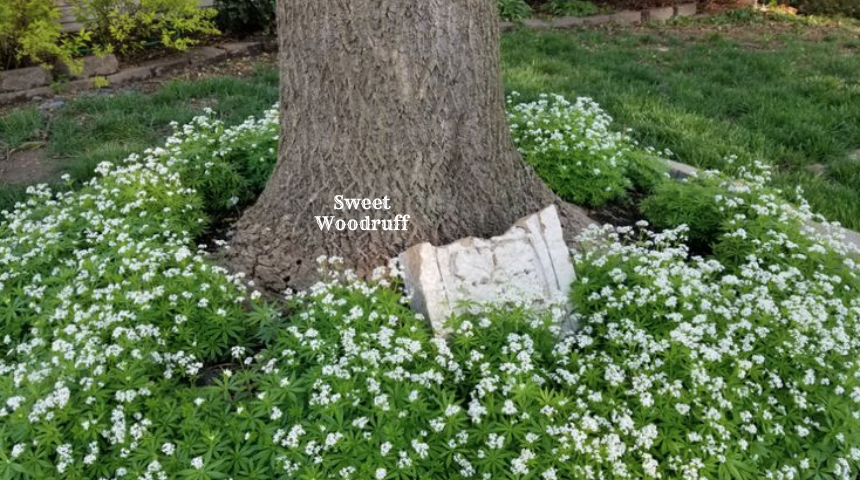
I appreciate how sweet woodruff helps retain soil moisture and prevent erosion. It’s a graceful, low-maintenance option that brings beauty to shady spaces.
8. Sedum (Stonecrop)
Sedum, commonly known as stonecrop, offers a wide variety of ground cover options that thrive in dry, sunny conditions. Sedums like ‘Dragon’s Blood’ or ‘Angelina’ have colorful foliage that changes with the seasons, adding year-round interest to the garden.
These plants are succulents, meaning they store water in their leaves, which makes them highly drought-tolerant and perfect for rock gardens or sandy soils. Sedum’s small, star-shaped flowers bloom in summer, attracting pollinators like bees and butterflies.
I love how sedum varieties add texture and contrast to other plants, with their fleshy leaves providing a unique look. They require little maintenance and don’t need much water, making them a great choice for low-water landscapes.
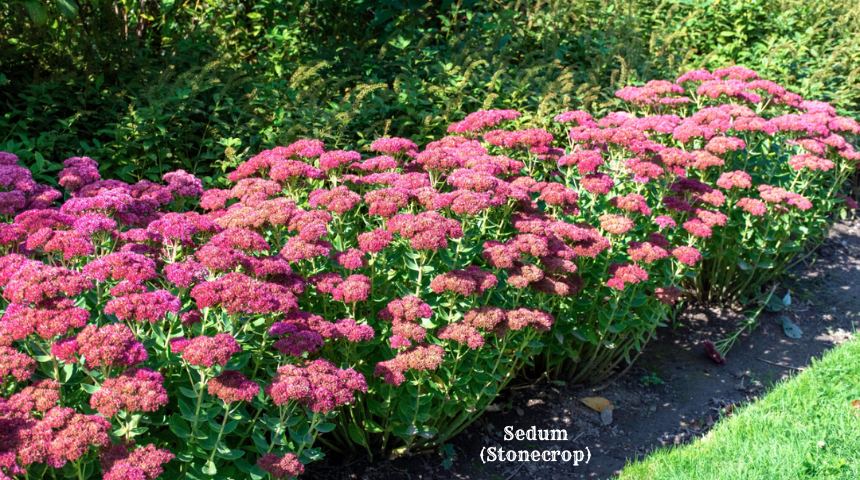
Sedum spreads slowly, forming a mat that suppresses weeds without becoming invasive. It’s also resistant to pests and diseases, so I rarely have to worry about it. Sedum’s tolerance for poor soils and full sun makes it a versatile addition to any garden.
9. Lamb’s Ear (Stachys byzantine)
Lamb’s ear is a favorite of mine for its soft, silvery leaves that feel like velvet to the touch. It grows in a compact, low mound that spreads slowly, creating a dense ground cover perfect for sunny areas.
Lamb’s ear blooms in late spring, sending up spikes of small purple flowers that add a splash of color. I find it works well along garden borders, where it can soften the edges and provide a contrast to green foliage.
This plant is drought-tolerant once established, which makes it ideal for dry, well-drained soils. Its unique texture and color make it a standout, and it pairs beautifully with both flowering plants and other textured foliage.
Lamb’s ear is also deer- and rabbit-resistant, so it stays looking fresh throughout the season. It’s easy to care for, requiring minimal pruning or watering.

I occasionally divide it to keep it from getting too dense, but otherwise, it’s a low-maintenance gem. Lamb’s ear adds a soft, inviting look to the garden, and its silvery color brings brightness to sunny spots.
10. Bearberry (Arctostaphylos uva-ursi)
Bearberry is an evergreen ground cover with glossy, dark green leaves that turn red in the fall. This hardy plant produces delicate pink or white flowers in spring, followed by bright red berries in the fall, which attract birds.
Bearberry prefers sandy or rocky soils and thrives in full sun, making it ideal for dry, exposed areas. It’s a slow-growing plant that forms a low mat, covering the ground and helping to prevent soil erosion.
I love bearberry’s resilience, as it tolerates harsh conditions, including drought and poor soils. It’s also pest-resistant and doesn’t require much maintenance once established.
Bearberry spreads gradually, so it doesn’t overwhelm other plants, making it easy to manage. The red berries add seasonal interest, and the evergreen foliage provides year-round color.

This plant is a fantastic option for gardeners looking to add a tough, low-maintenance ground cover to challenging areas in the landscape.
11. Hellebore
Hellebore, also known as Lenten rose, is a shade-loving ground cover with beautiful, long-lasting flowers. It blooms in early spring, often when little else is in flower, providing color and interest in shaded areas.
The flowers come in a range of colors, including white, pink, purple, and even green, adding variety to the garden. Hellebore has tough, leathery leaves that stay green year-round, creating a lush, low-growing mat.
It prefers moist, well-drained soil and does well in partial to full shade, making it perfect for woodland gardens. I love how hellebores bring color and structure to shaded spots, where it’s often hard to find flowering plants.
They’re resistant to deer and rabbits, which keeps them looking fresh without extra care. Hellebores are relatively low-maintenance, only requiring occasional cleanup of old leaves.
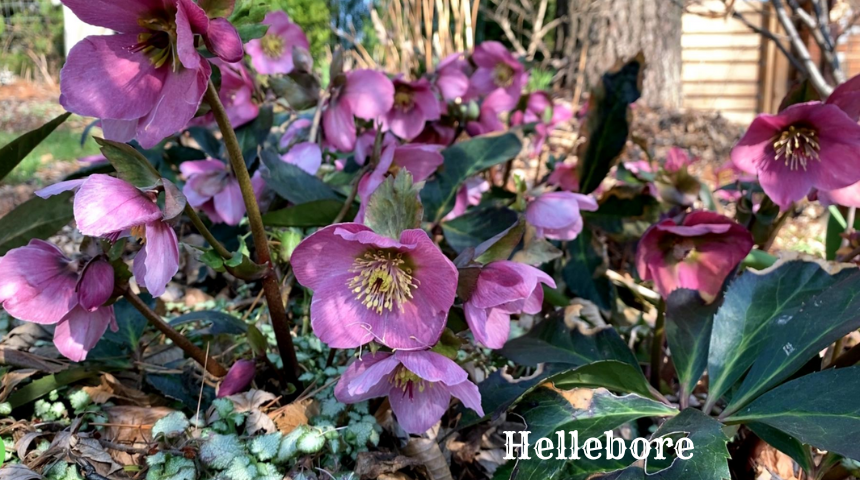
They also live for many years, gradually spreading to form a dense ground cover. Hellebores bring elegance and durability to shady gardens, making them a valuable addition.
12. Japanese Spurge (Pachysandra terminalis)
Japanese spurge is an ideal ground cover for deep shade, with lush, green foliage that remains attractive year-round. It forms a dense carpet that’s perfect for areas where grass won’t grow, especially under trees or along shady borders.
Japanese spurge produces small, white flowers in spring, which add a delicate touch of color to its dark green leaves. This plant thrives in moist, well-drained soil and spreads slowly, so it doesn’t become invasive.
I like how it helps to prevent soil erosion and keep weeds at bay, reducing the need for maintenance. Japanese spurge is easy to care for and requires little attention once it’s established.

It’s also resistant to pests and deer, making it a reliable choice for shaded gardens. The foliage has a slight sheen that adds visual interest, even in low light. Japanese spurge is a classic, low-maintenance option that brings structure and beauty to shady areas.
13. Lilyturf (Liriope muscari)
Lilyturf, or liriope, is a versatile ground cover that thrives in both sun and shade. It has grassy, arching leaves and produces spikes of purple or lavender flowers in late summer.
Lilyturf is very hardy and tolerates a range of soil conditions, making it a great choice for problem areas in the garden. The flowers are followed by small, dark berries that add interest in the fall.
I find lilyturf to be easy to maintain, as it requires minimal watering and pruning. It also forms a dense clump that suppresses weeds, making it low-maintenance and practical.
Lilyturf’s evergreen foliage provides year-round color, and it’s resistant to deer and rabbits. I sometimes use it as an edging plant along pathways, where its upright leaves add structure and contrast.

This ground cover is adaptable and reliable, bringing beauty and texture to a variety of garden settings.
14. Ice Plant (Delosperma cooperi)
Ice plant is a vibrant ground cover with succulent leaves and bright pink or purple flowers. It’s a sun-loving plant that thrives in hot, dry conditions, making it perfect for rock gardens and sandy soils.
The flowers bloom from spring through fall, creating a long-lasting display of color that draws attention. Ice plants’ fleshy leaves store water, allowing it to survive periods of drought with ease.
I love how the leaves have a shimmering, ice-like appearance, adding texture and shine to the garden. This plant spreads moderately, forming a mat that controls soil erosion and suppresses weeds.
Ice plants is also resistant to pests and deer, which keeps it looking healthy without extra effort. It requires little water once established, which makes it a great choice for low-water gardens.

Ice plant’s bright flowers and unique foliage make it a stunning and practical choice for sunny areas.
15. Irish Moss (Sagina subulata)
Irish moss is a soft, moss-like ground cover that creates a lush, green carpet. It produces tiny white flowers in the spring and summer, adding a delicate touch of color.
Irish moss prefers partial shade and moist soil, though it can tolerate full sun in cooler climates. I like to plant it between stepping stones or along garden paths, where its soft texture adds charm.
This plant is low-growing and spreads slowly, creating a neat, compact mat that’s easy to control. Irish moss requires regular watering, especially in dry spells, to keep it looking fresh and green.

It’s also sensitive to foot traffic, so I avoid planting it in high-traffic areas. Irish moss stays green year-round, providing a consistent look that enhances any garden space.
With its delicate appearance and lush, green color, Irish moss is a lovely choice for adding a soft, natural feel to garden pathways and borders.
FAQ
What is flowering ground cover?
Flowering ground cover includes low-growing plants that spread across the ground, producing colorful blooms. They add beauty, help control weeds, and prevent soil erosion.
Which flowering ground cover grows best in the shade?
Plants like periwinkle, ajuga, and sweet woodruff thrive in shaded areas. These varieties add color and fill shaded garden spots effectively.
How do I maintain flowering ground cover plants?
Most ground covers need minimal care. Regular watering, occasional trimming, and weeding help keep them healthy and contained.
Conclusion
Incorporating flowering ground cover into the garden brings life, color, and texture to spaces that often go overlooked. I find it amazing how these low-growing plants can transform a dull area into a vibrant, eye-catching landscape.
Each ground cover plant has its own unique charm, from the soft blooms of Irish moss to the fragrant foliage of creeping thyme. Ground covers add beauty while serving practical purposes, like suppressing weeds and helping to prevent soil erosion.
I love how these plants bring new layers to the garden’s design, creating a lush, multi-dimensional look that complements taller flowers and shrubs. With options for every space and soil type, flowering ground covers are versatile enough for every garden style.
If you’re looking for a low-maintenance way to boost your garden’s charm, flowering ground cover plants are a perfect choice. They bring a burst of color and life to even the smallest spaces, making every corner of the garden feel full of character.



